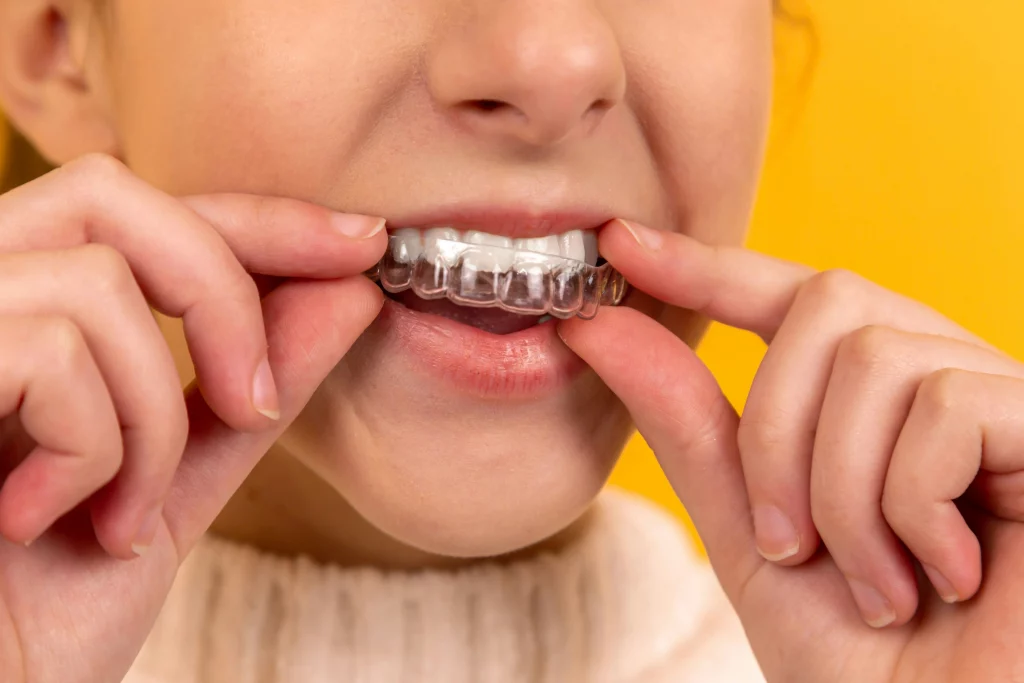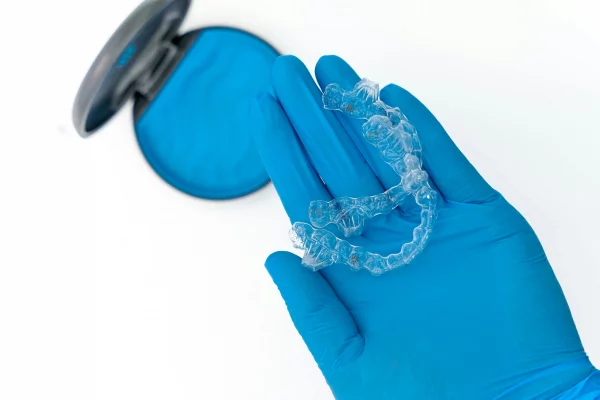If you’re considering clear aligners for orthodontic treatment, you might find yourself asking, “What does Invisalign actually cost?” Understanding the financial commitment associated with Invisalign in the United States is essential for effective planning. Invisalign offers a subtle and comfortable alternative to traditional braces, yet the overall cost can fluctuate based on multiple variables.
The expense is not universal; factors such as your specific dental needs, the complexity of your case, your geographic location, and the provider you choose all play a role. This overview will outline the primary influences on Invisalign pricing, discuss available payment methods, and offer practical strategies to maximize the value of your investment in oral health and aesthetics. Careful consideration of these aspects ensures you approach your orthodontic journey both informed and prepared.
What Is Invisalign?
Invisalign represents a contemporary approach to orthodontic care, employing a sequence of transparent, removable aligners to progressively adjust dental alignment. Unlike conventional metal braces, these aligners are discreet and can be easily removed for eating and oral hygiene, minimizing dietary limitations and simplifying maintenance. This method offers an effective alternative for individuals seeking a less conspicuous and more convenient orthodontic solution.
Average Invisalign Cost in the U.S.
Invisalign treatment in the United States generally ranges from $3,000 to $8,000, with the actual cost determined by several significant variables. The complexity of the patient’s orthodontic case is a primary factor—patients requiring minor adjustments typically incur lower costs, whereas individuals with more severe alignment or bite issues face higher fees due to the increased intricacy of their treatment.
Geographic location also plays a role, as providers in metropolitan areas or regions with elevated living expenses tend to charge more for orthodontic services. Furthermore, the expertise and reputation of the dental professional can influence pricing; highly qualified orthodontists or dentists with specialized experience in Invisalign frequently command higher rates, which may reflect the quality and reliability of care.
The cost of Invisalign usually encompasses a comprehensive package, including the initial consultation, digital scans or impressions, the fabrication of customized aligners, routine follow-up appointments, and post-treatment retainers to preserve the treatment outcome.
Financial planning for Invisalign is facilitated by various payment options, such as installment plans or the application of dental insurance benefits, which can help mitigate the financial burden. Ultimately, investing in Invisalign provides patients with a discreet and comfortable alternative to traditional braces and the potential for enhanced confidence and oral health.
Factors Affecting Invisalign Cost

Several factors can influence the overall cost of Invisalign treatment. Understanding these variables can help you make informed decisions and plan your budget effectively. From the complexity of your orthodontic needs to your provider’s experience, each element plays a role in determining the final price.
Severity of Your Orthodontic Issues
The degree of dental misalignment significantly influences the cost of Invisalign treatment. Minor orthodontic concerns generally require fewer aligners and shorter treatment periods, resulting in lower expenses. In contrast, complex cases—such as pronounced crowding, spacing, or bite irregularities, necessitate more aligners and extended treatment duration, which directly increases the financial investment.
Geographic Location
Geographical location is a considerable factor in determining Invisalign pricing. Metropolitan areas and regions with a higher cost of living typically see elevated treatment fees, largely due to increased operational costs and demand. Conversely, smaller cities and rural areas often offer more competitive rates. It is, therefore, prudent to consider regional pricing trends when planning for orthodontic care.
Provider’s Expertise and Reputation
The qualifications and reputation of the Invisalign provider also impact the overall cost. Practitioners with advanced certifications or substantial experience tend to charge premium fees, reflecting their specialized knowledge and higher standard of care. The use of advanced technology and personalized treatment approaches by these providers can further contribute to higher costs, but may also enhance treatment outcomes.
Treatment Duration and Number of Aligners
The total length of treatment and the number of aligners required are directly proportional to the overall expense. Extended treatment plans involving more aligners and frequent monitoring appointments typically incur higher costs. In contrast, shorter treatment periods with fewer aligners are generally more economical.
Additional Procedures
Invisalign treatment may sometimes necessitate supplementary dental procedures to achieve optimal results. Services such as professional cleaning, dental fillings, enamel modification, or the placement of attachments for better aligner retention can contribute additional costs. While these procedures increase the overall investment, they are often essential for successful orthodontic outcomes.
Invisalign Cost vs. Traditional Braces
When evaluating orthodontic options, traditional braces typically cost between $2,000 and $7,000. While these may appear more affordable at first glance, they often necessitate more frequent visits to the orthodontist and are associated with noticeable aesthetic concerns. In contrast, Invisalign tends to be priced somewhat higher. Nevertheless, it is valued by many patients for its discreet appearance, improved comfort, and convenience. These advantages frequently justify the additional investment for those prioritizing aesthetics and ease of use.
Insurance Coverage and Financing Options

Insurance coverage for Invisalign varies widely, but many dental insurance policies include it under their orthodontic benefits. Typically, this means the plan may cover a percentage of Invisalign’s total cost or offer a fixed benefit amount often ranging from $1,500 to $3,000. It is essential to consult your insurance provider for precise information regarding your specific policy’s coverage.
Patients may utilize funds from an FSA or HSA to pay for Invisalign. These accounts allow for pre-tax savings, which can significantly reduce out-of-pocket expenses when applied to eligible dental treatments such as Invisalign.
Given the substantial cost of Invisalign, most dental practices, including providers like G&P Dental, offer payment plans or collaborate with third-party financing companies. These arrangements allow patients to spread payments over several months or years, making orthodontic treatment more financially accessible.
Invisalign Treatment Process Overview
Understanding the Invisalign treatment process can help you feel more confident and prepared for your orthodontic journey. From the initial consultation to the final results, each step is designed to ensure your teeth gradually shift into proper alignment with comfort and precision. Here’s an overview of what you can expect during your Invisalign treatment.
Step 1 – Initial Consultation
During an initial Invisalign consultation, the dental professional conducts a comprehensive assessment of your dental alignment, occlusion, and overall oral health status. This evaluation includes a discussion of your aesthetic objectives and a candid review of whether Invisalign is an appropriate intervention for your specific case. This consultation also serves as an opportunity to pose questions regarding treatment protocols and anticipated outcomes.
Step 2 – Customized Treatment Plan
Advanced three-dimensional imaging technology is then utilized to generate a precise digital representation of your dentition. This digital model facilitates the fabrication of a series of customized aligners, each engineered to incrementally reposition your teeth toward the desired alignment. Prospective treatment outcomes may be visualized prior to the commencement of therapy, allowing for informed expectations.
Step 3 – Wearing Aligners
Patients are typically instructed to wear each aligner set for approximately two weeks, removing them solely for eating, drinking, brushing, and flossing. Periodic follow-up appointments are scheduled so that the practitioner can monitor progress and make necessary adjustments to optimize tooth movement.
Step 4 – Completion and Retainers
Upon completion of the aligner sequence, retainers are supplied to maintain dental stability in the corrected positions. Strict adherence to retainer protocols is imperative for the preservation of long-term orthodontic results.
Hidden Costs to Consider
Upon completion of Invisalign treatment, the use of retainers becomes crucial in preserving the results achieved. Without consistent retainer use, there is a significant risk that teeth may gradually revert to their prior misaligned positions. While some orthodontic providers may initially supply retainers as part of the treatment package, it is important to note that these devices are subject to wear and may require replacement, often at a notable additional cost.
Furthermore, periodic follow-up appointments are generally advised. These visits serve to evaluate both oral health and the effectiveness of the retainer, and they may contribute to the overall financial investment in orthodontic care.
Given that Invisalign aligners are both transparent and removable, they are inherently susceptible to accidental loss or damage. In such cases, patients are typically responsible for the expense of replacement aligners, which can introduce unanticipated costs. Consequently, it is essential for individuals to exercise diligence in handling their aligners and to adhere closely to their provider’s guidelines to minimize avoidable fees.
How to Get the Best Invisalign Cost
Navigating the cost of Invisalign can feel overwhelming, but there are smart ways to manage expenses without compromising quality. From choosing the right provider to exploring payment options, understanding how to optimize your Invisalign investment can help you achieve a beautiful smile while staying within your budget. Here are practical tips to get the best value for your Invisalign treatment.
Shop Around and Consult Multiple Providers
It’s wise to consult with several Invisalign providers before making a decision. By obtaining quotes and discussing treatment options, you can better assess each provider’s level of expertise and the approach they recommend. Don’t focus solely on the cost, consider who offers the most value in terms of experience and proposed outcomes.
Verify Insurance and Financing Options Early
Dental insurance policies can be quite complex, so it’s important to review your benefits to see what orthodontic services are covered. Additionally, ask your prospective providers about financing options or payment plans. Understanding the financial aspect ahead of time can help you plan more effectively and minimize unexpected expenses.
Prioritize Quality Over Cost
While it may be tempting to choose the least expensive provider, remember that the quality and experience of the practitioner are crucial for achieving optimal results. Select a provider with a solid track record in Invisalign treatments, as this will increase your chances of a successful outcome and a comfortable experience.
Frequently Asked Questions (FAQs)
1. How much does Invisalign cost without insurance?
Without insurance, Invisalign typically costs between $3,000 and $8,000. The price depends on the complexity of your case, your location, and the provider’s expertise. Most quotes include the full treatment, custom aligners, checkups, and retainers. Always confirm what’s covered before starting treatment.
2. Does Invisalign treatment take longer than traditional braces?
Invisalign treatment usually lasts 12 to 18 months, similar to traditional braces. Mild to moderate cases may see results sooner. Your exact timeline depends on how closely you follow your plan and the severity of your alignment issues. Your provider will give you a personalized estimate during the consultation.
3. Can I use my dental insurance to cover Invisalign?
Many dental insurance plans include Invisalign under orthodontic benefits. Coverage often reimburses up to 50% of the cost, typically capped at a set amount. Check with your insurer to understand your policy’s limits and eligibility. Your provider’s office may also help verify coverage.
4. Are there any hidden fees associated with Invisalign?
Yes, additional costs can include retainers after treatment, replacement aligners, and any required dental work beforehand. Not all providers include these in the initial quote. Be sure to ask for a full breakdown of potential expenses upfront. This will help avoid surprises later on.
5. What happens if I lose or break an aligner?
If you lose an aligner, contact your provider immediately. A replacement will likely incur an extra cost. Depending on when it’s lost, it might also slightly delay your progress. Taking good care of your aligners helps keep treatment on track and avoid unexpected fees.
Wondering if invisalign fits your budget? You’re not alone—cost is one of the most common questions we hear. That’s why we break it all down in our Complete Guide to Invisalign pricing in the U.S., including what affects the cost and how insurance or payment plans can help. You might be surprised at how affordable a confident smile can be. Schedule your free Invisalign consultation today and let us help you explore your options with no pressure.


